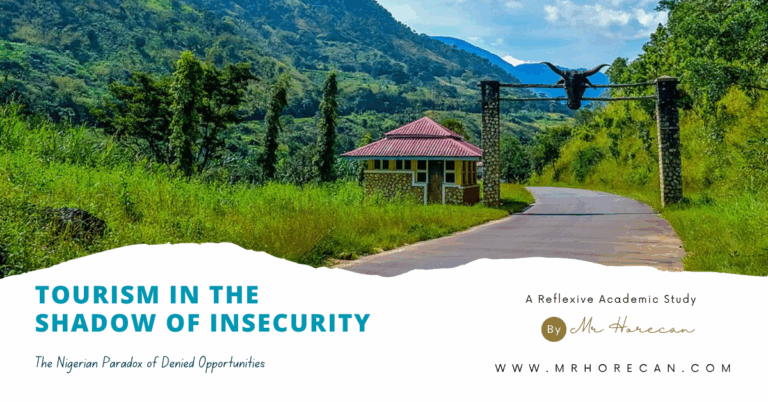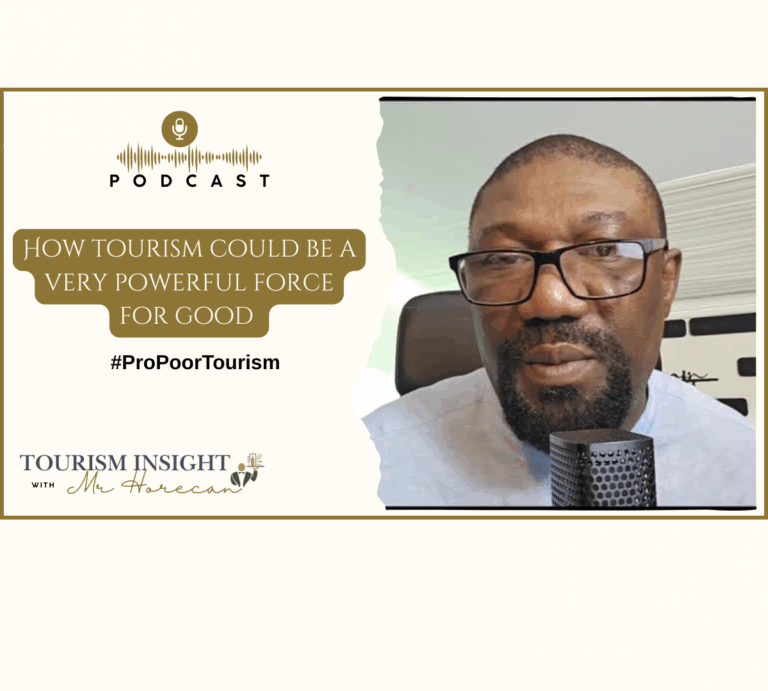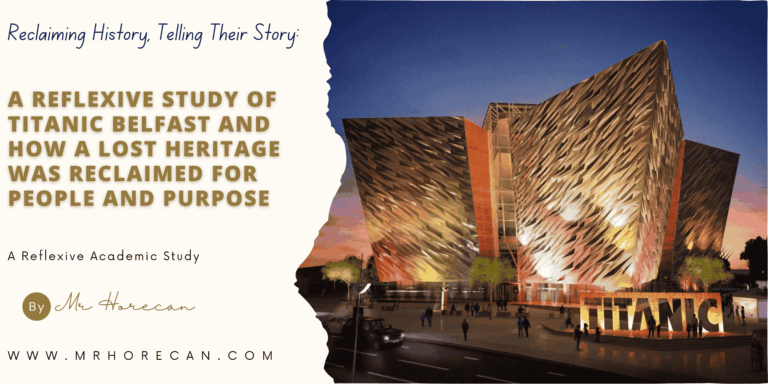
PREAMBLE
Pro-Poor Tourism (PPT) is a transformative model that reimagines tourism as a catalyst for economic
inclusion, poverty alleviation, and sustainable development. Born in the late 1990s as a response to the
inequities of traditional tourism—which often benefits foreign investors and local elites while
marginalizing host communities—PPT prioritizes the redistribution of tourism revenues, community
empowerment, and equitable participation in tourism value chains. As global tourism continues to grow,
contributing over $9.25 trillion to the world economy, there is a pressing need to shift from profit-driven
models to inclusive frameworks that promote the triple bottom line of People, Planet, and Profit. This
three-part article series offers a comprehensive exploration of Pro-Poor Tourism: Part One introduces the
foundational concepts and historical context; Part Two explores the opportunities, real-world success
stories, challenges, and the impact of PPT; and Part Three outlines actionable strategies for governments,
communities, private sectors, NGOs, and
PART ONE:
INTRODUCTION: UNDERSTANDING PRO-POOR TOURISM
Welcome to the first part of our exploration of pro-poor tourism (ppt). This series examines how tourism
can become a force for social justice and economic inclusion, especially in developing regions where the
benefits of traditional tourism models often fail to reach marginalized communities. In this part, we will
delve into the foundations of ppt, exploring its origins, fundamental principles, and the rationale behind its
emergence. We will also examine how ppt differs from conventional and sustainable tourism, offering a
more inclusive and community-cantered approach.
1. UNDERSTANDING PRO-POOR TOURISM: WHAT EXACTLY IS IT?
Pro-Poor Tourism (PPT) is a tourism strategy explicitly designed to ensure that the economic and social
benefits generated by tourism reach impoverished communities. Unlike specific tourism types like eco-
tourism or cultural tourism, PPT is an approach that can be integrated into any form of tourism.
The primary goal of PPT is to maximize the positive impacts of tourism on local communities while
minimizing negative consequences. To achieve this, PPT initiatives focus on creating job opportunities,
supporting local entrepreneurship, and fostering community engagement. It is not a specific type of
tourism, like eco-tourism or cultural tourism, but rather an approach that can be integrated into any
tourism model, ensuring that local communities become active stakeholders.
Key Principles of Pro-Poor Tourism:
- Economic Inclusion: Ensuring that local communities receive a fair share of tourism revenue.
- Social Empowerment: Involving local people in decision-making and enabling them to shape tourism initiatives.
- Cultural Preservation: Promoting and safeguarding local culture, traditions, and heritage.
- Environmental Sustainability: Encouraging tourism practices that protect natural resources and biodiversity.
- Community Ownership: Enabling locals to own and manage tourism assets.
What distinguishes ppt from traditional and sustainable tourism?
What distinguishes PPT from traditional and sustainable tourism is its focus on poverty alleviation.
Traditional tourism often emphasizes profit maximization, with benefits flowing mainly to foreign
investors and local elites. Sustainable tourism, while emphasizing environmental conservation, may not
necessarily address social inequities. In contrast, PPT deliberately targets economic inclusion and social
empowerment by channeling tourism revenue directly to marginalized communities.
For example, in traditional tourism, a luxury resort may generate substantial revenue but employ local
people only in low-wage roles. In sustainable tourism, efforts might be made to minimize environmental
impact, but local economic benefits might still be limited. In PPT, however, the resort would be
community-owned or operated in partnership with local stakeholders, employing locals not just in basic
jobs but also in management and operational roles.
2. HISTORICAL CONTEXT: ORIGINS AND EVOLUTION OF PRO-POOR TOURISM
The concept of Pro-Poor Tourism emerged in the late 1990s as part of a broader push towards sustainable
development. The realization that tourism, despite being one of the world’s largest industries, often
excluded local communities from its economic benefits led to a rethinking of how tourism could be more
inclusive.
Key Milestones in PPT Development:
- 1999: The term "Pro-Poor Tourism" was formally introduced through collaborative work by the UK Department for International Development (DFID), the Overseas Development Institute (ODI), and the International Institute for Environment and Development (IIED).
- Early 2000s: Pilot projects in countries like South Africa, Kenya, and Nepal tested how tourism could directly benefit local communities.
- 2010s: Global tourism strategies increasingly recognized the importance of community-based tourism, integrating PPT into national tourism policies in several African and Asian countries.
- 2020s: As responsible travel became more mainstream, PPT gained renewed attention as a means to rebuild local economies after the COVID-19 pandemic.
3. WHY DID PPT EMERGE? THE RATIONALE BEHIND THE CONCEPT
Tourism growth did not necessarily translate into poverty reduction, especially in developing countries.
Large-scale tourism developments often displaced communities, exploited local labor, and directed profits
to foreign investors. This prompted tourism experts and development practitioners to rethink conventional
tourism models and explore approaches that would ensure fair economic distribution and social equity.
Pro-Poor Tourism (PPT) emerged as a counterbalance to the dominant tourism paradigm, advocating for
local ownership, social inclusion, and sustainable community development. It challenges the traditional
profit-driven mindset by prioritizing community involvement and equitable sharing of tourism benefits.
Why Pro-Poor Tourism Matters
One major issue with traditional tourism is economic leakage, where profits generated in a host region
flow out to foreign-owned businesses, leaving local communities with minimal benefits. PPT counters this
by promoting local ownership and investment, ensuring that revenue stays within the community.
Social and cultural marginalization is another concern. In many destinations, local traditions are
commodified without community input, leading to cultural erosion. PPT prioritizes cultural preservation
by involving communities in crafting and managing tourism experiences, maintaining authenticity while
fostering pride in local heritage.
Environmental degradation is also a significant challenge in traditional tourism, where unsustainable
practices can damage ecosystems and harm communities reliant on natural resources. PPT encourages
environmental stewardship by linking conservation efforts to tourism revenue, allowing locals to protect
their environment while benefiting economically.
What makes an initiative a PPT initiative? Not all community-oriented or sustainable tourism projects
qualify. To be classified as PPT, an initiative must deliver direct benefits to low-income communities,
involve active local participation, ensure environmental sustainability, and promote inclusivity by
targeting marginalized groups. Capacity building is also essential, as locals need to take on roles beyond
basic tasks to ensure long-term community involvement.
Tourism can either widen the gap between rich and poor or help bridge it. Pro-poor tourism aims to achieve the latter by addressing economic Inequality, social marginalization, and environmental challenges.
LOOKING AHEAD: PPT AS A TRANSFORMATIVE TOOL
Pro-Poor Tourism is more than just an economic strategy—it is a moral imperative in a world where the
tourism industry often overlooks those most in need. As tourism continues to grow globally, the shift
towards inclusive and equitable practices is not just beneficial but essential for sustainable development.
By fostering partnerships between governments, communities, the private sector, and NGOs, PPT lays the
groundwork for a tourism model that respects people, the planet, and the economy. In the next part, we
will delve deeper into the opportunities and challenges associated with implementing PPT and explore
real-world examples of successful initiatives.
SUMMARY AND CONCLUSION
Part One has established the foundational concepts of Pro-Poor Tourism (PPT), highlighting its role as a transformative approach that prioritizes local involvement, economic inclusion, cultural preservation, and
sustainable development. Unlike traditional tourism, which often benefits a limited elite, PPT seeks to
directly empower marginalized communities by ensuring they actively participate in and profit from
tourism activities. The emergence of PPT as a response to economic inequality, social marginalization,
and environmental degradation marks a significant shift toward a more inclusive tourism model.
By rethinking tourism as a tool for social equity and sustainable development, Pro-Poor Tourism sets the
foundation for a more inclusive future where communities thrive alongside tourism growth.
KEY TAKEAWAYS:
- PPT is not a specific type of tourism but an approach that can be applied to various tourism models.
- The primary aim of PPT is to ensure that local communities directly benefit from tourism.
- It emerged in response to the negative impacts of traditional tourism on local economies.
- PPT promotes community ownership, environmental stewardship, and social inclusion.
- Addressing inequality, social marginalization, and environmental damage is central to PPT’s objectives.
INTRODUCTION TO THE NEXT PART:
With the foundational understanding of PPT established, the next part will explore the real-world
application of Pro-Poor Tourism. We will examine its economic implications, opportunities, challenges,
and measurable impacts. Real-life success stories from Africa and beyond will illustrate how PPT
initiatives have fostered community development. Additionally, we will discuss the practical challenges of
implementing PPT and assess its impact on social, economic, and environmental aspects of local
communities. Stay tuned for a comprehensive exploration of the practical dimensions of Pro-Poor Tourism.



